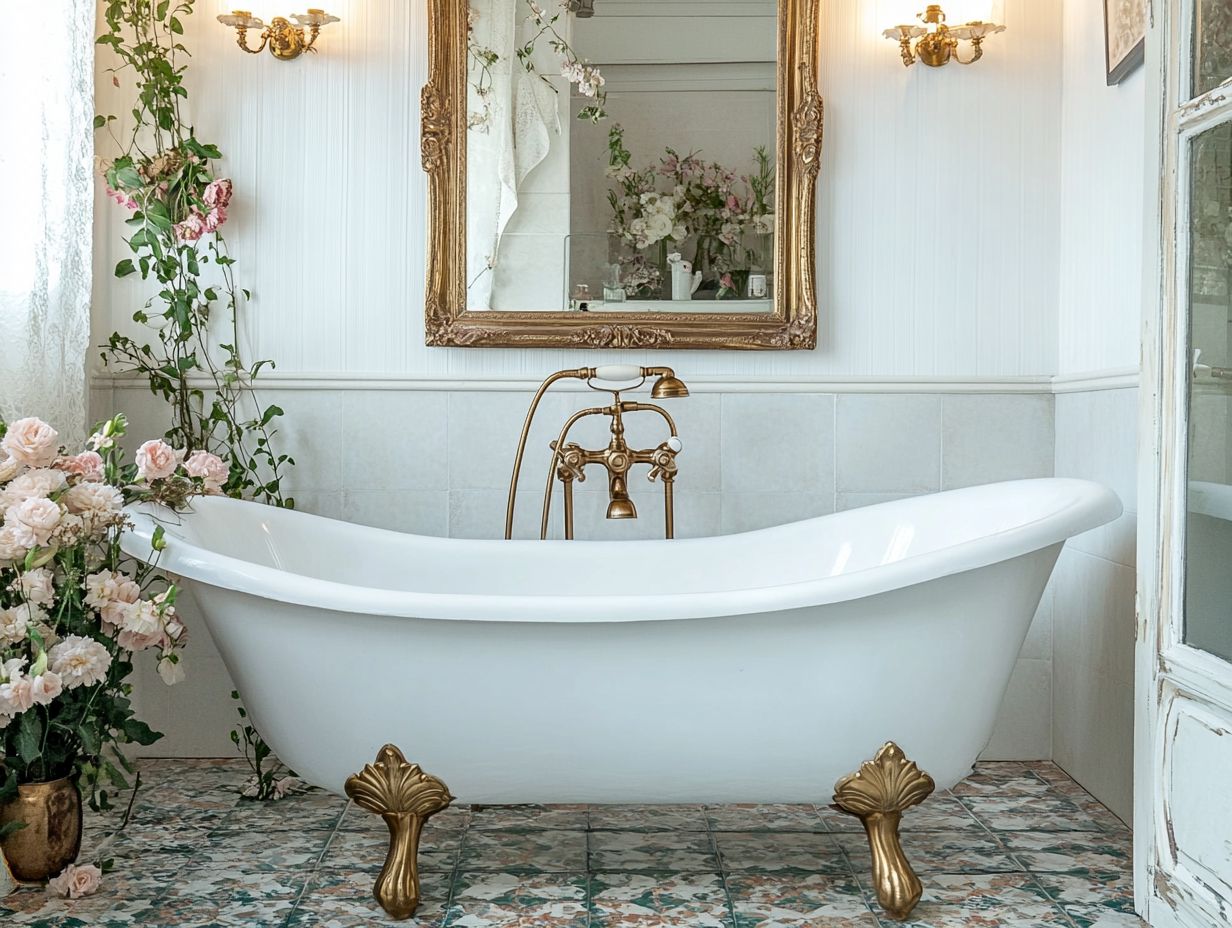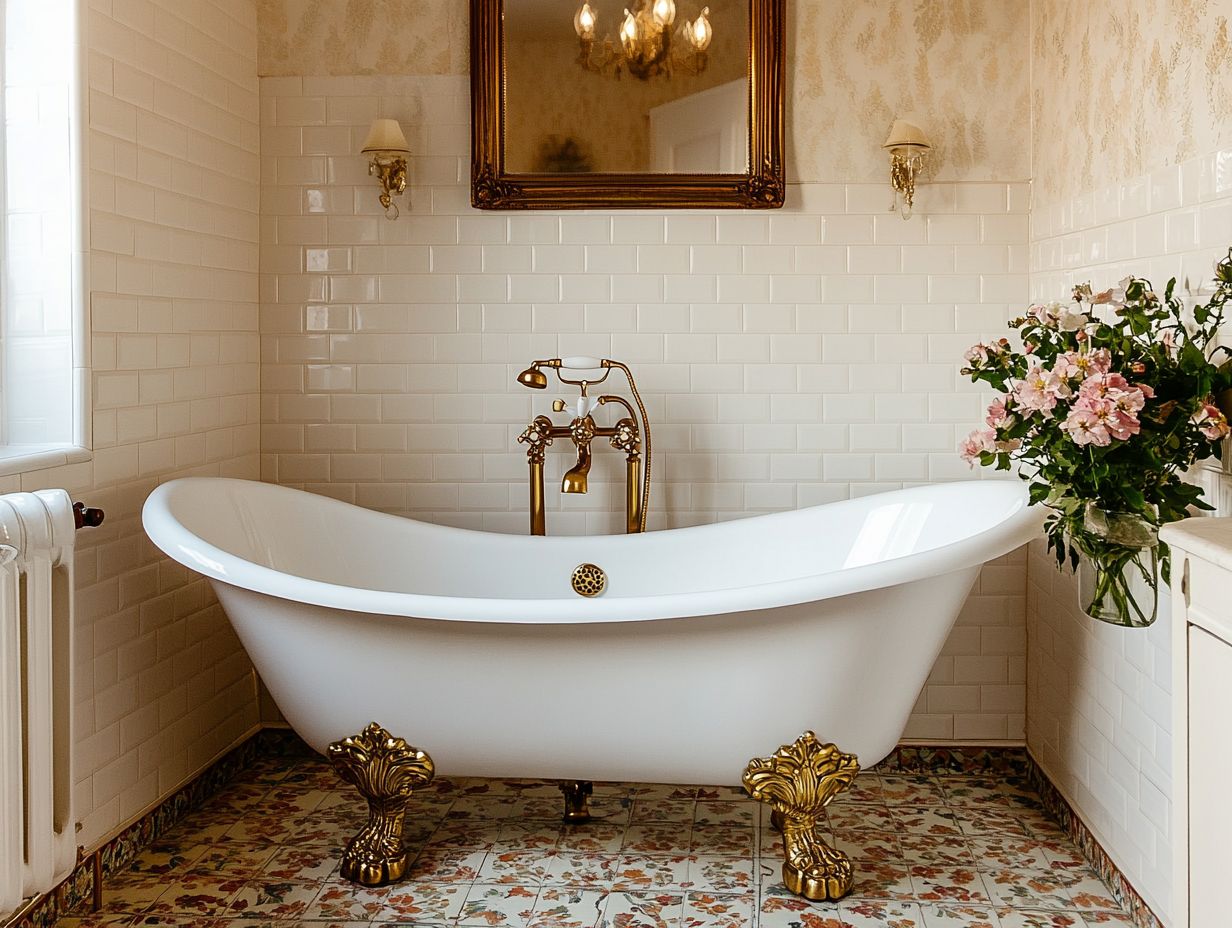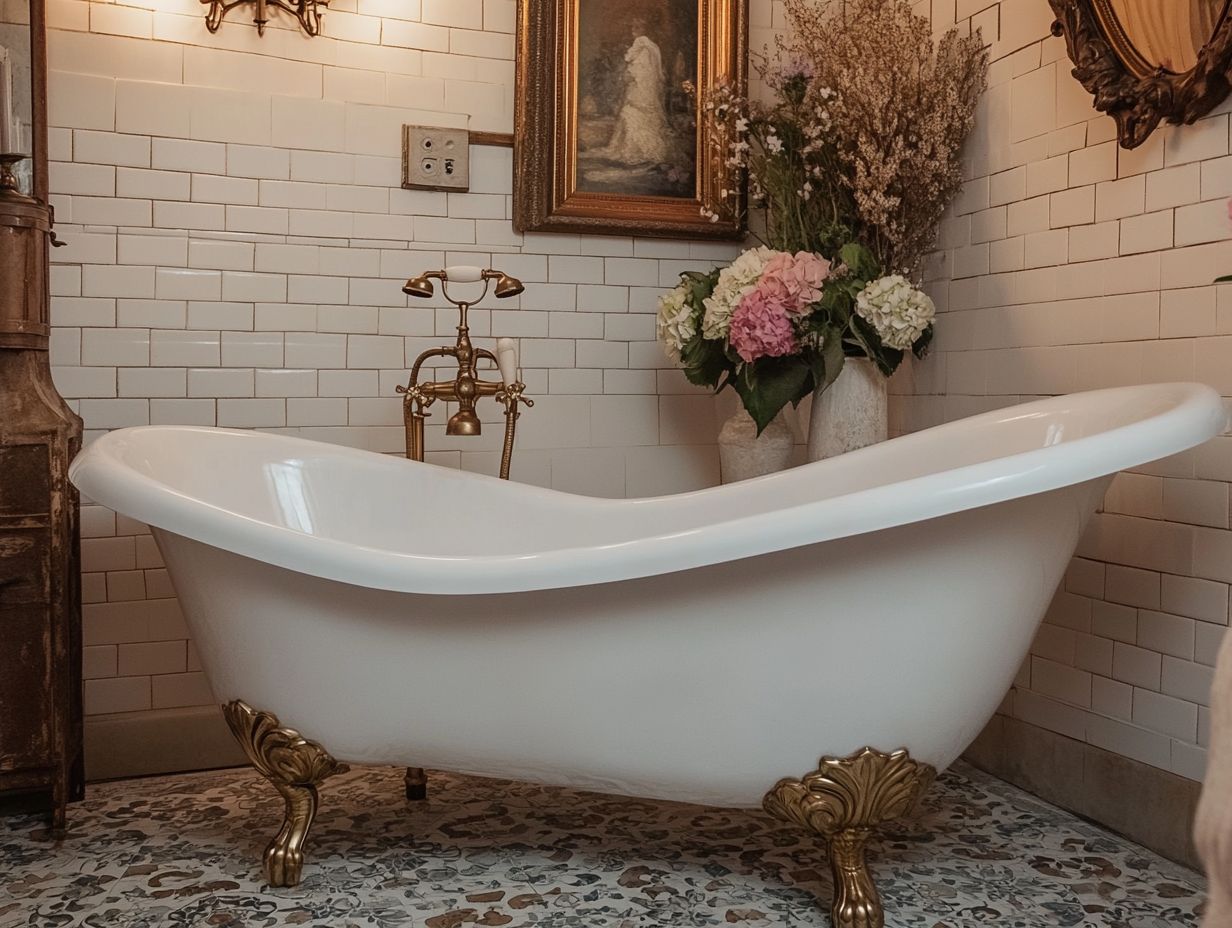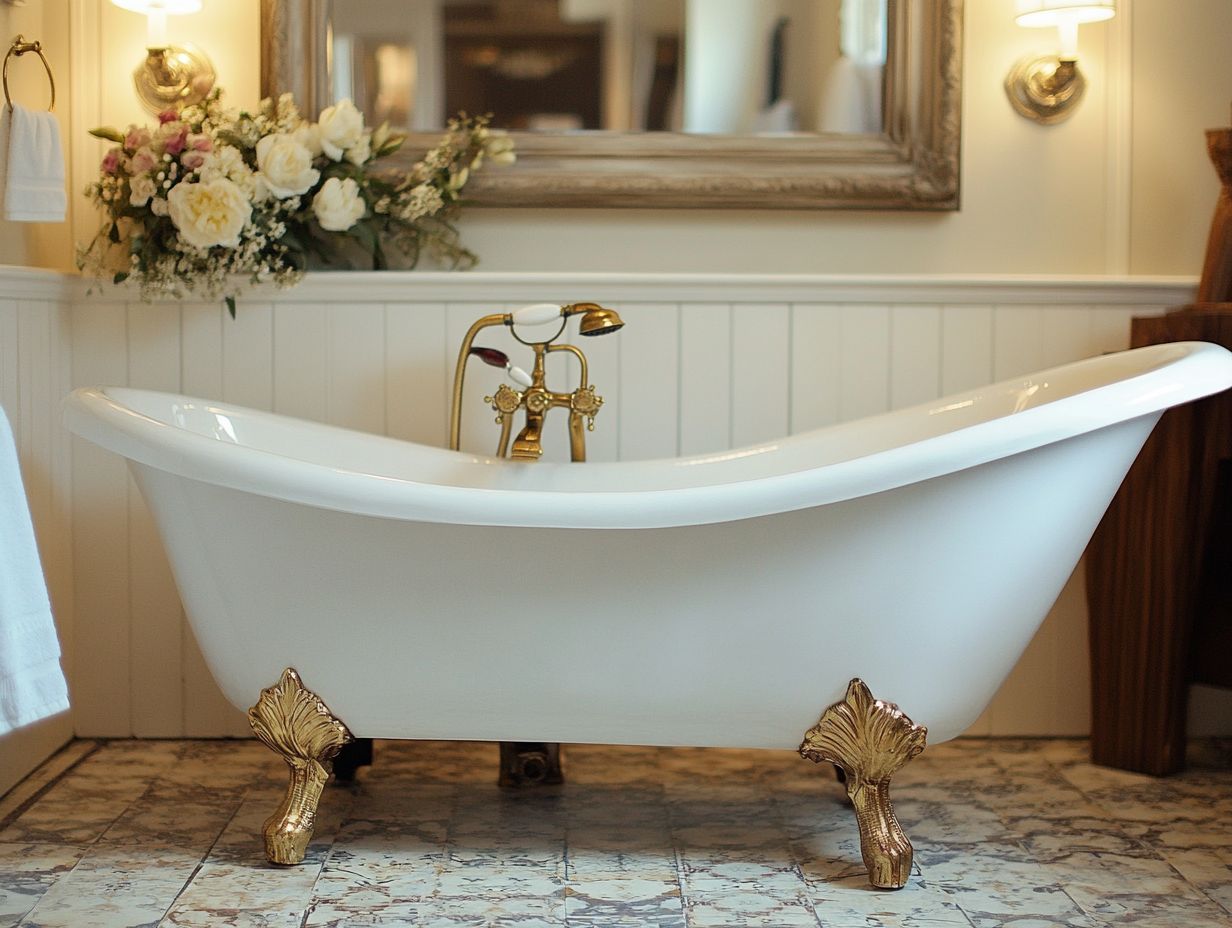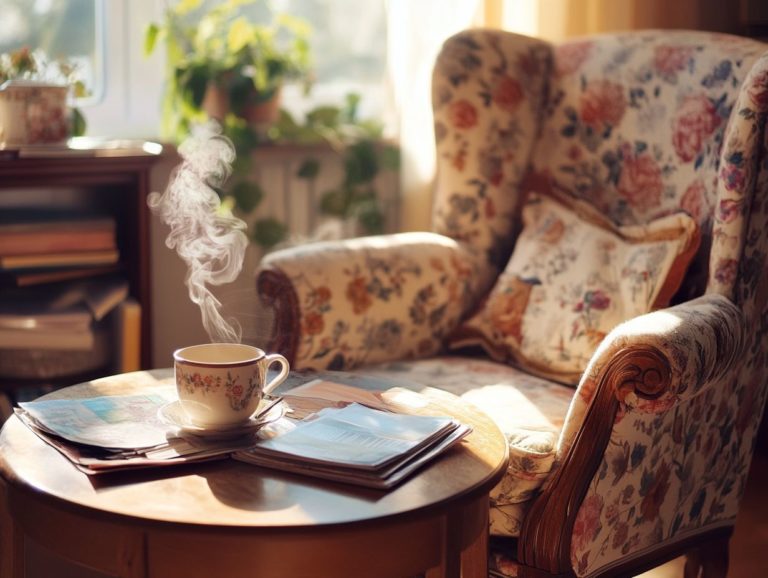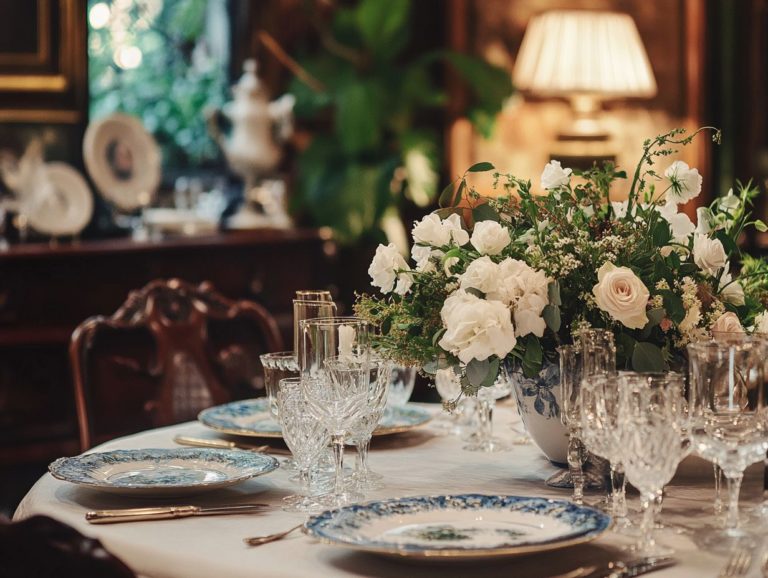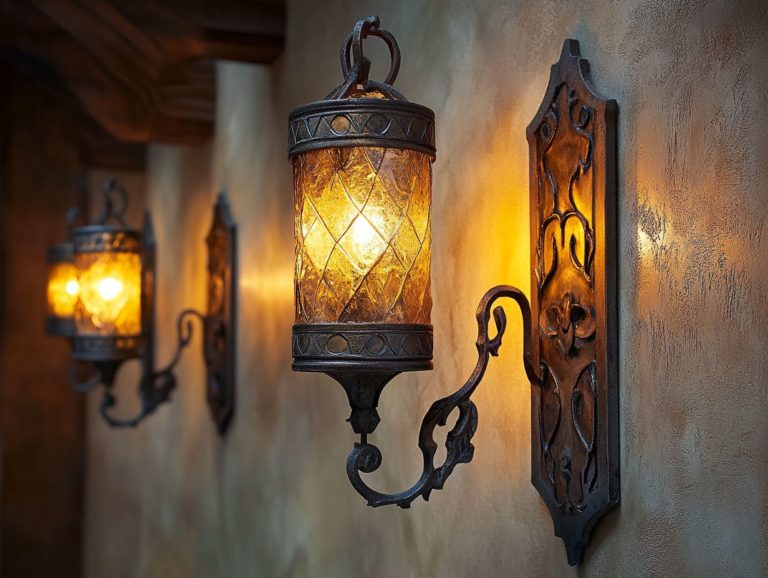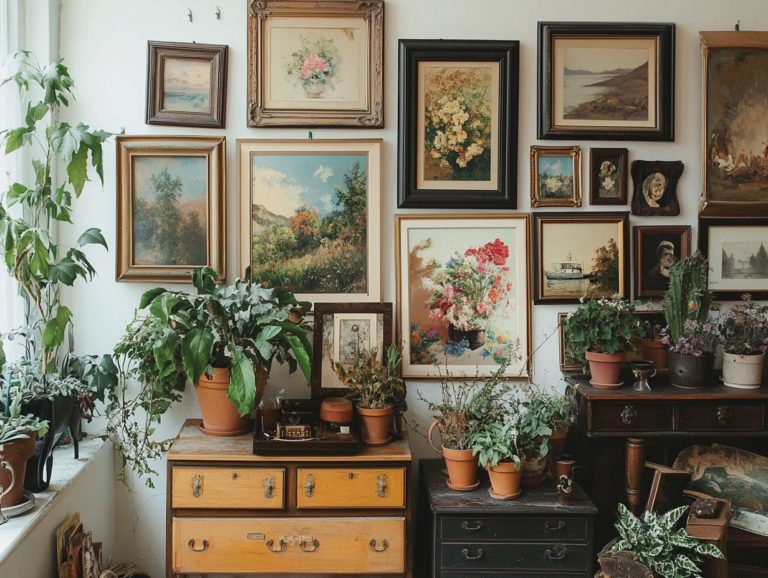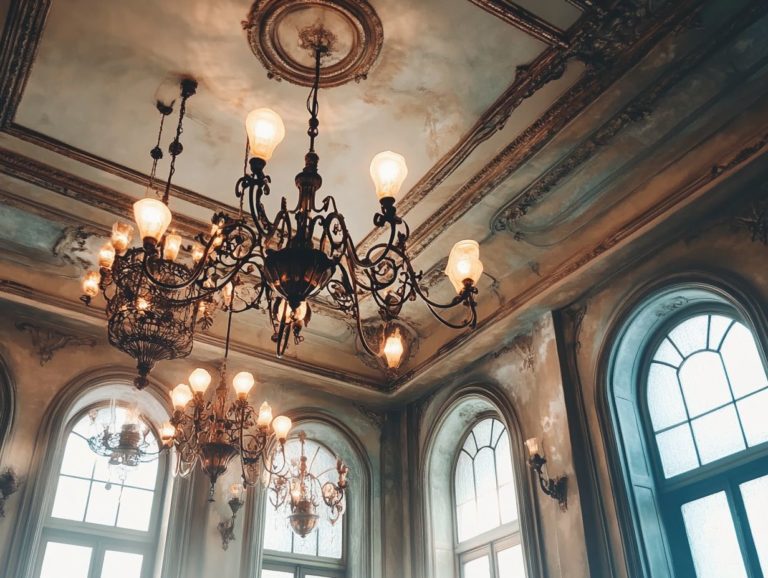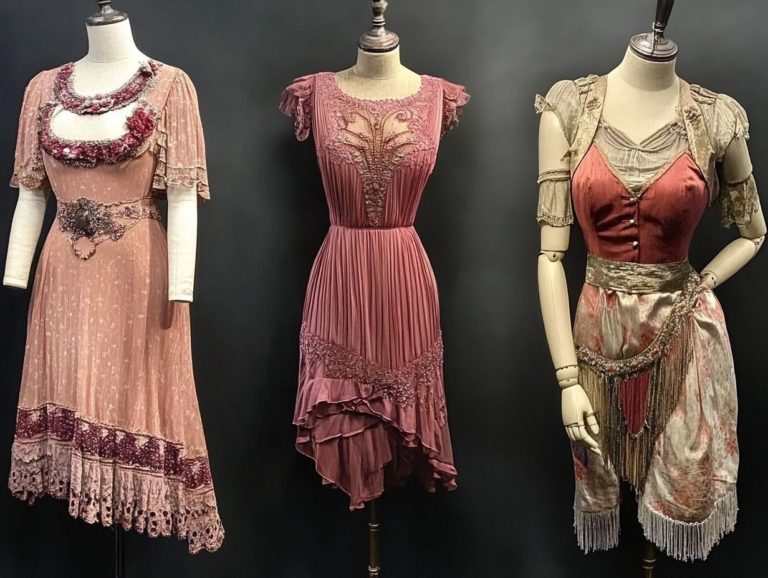How to Create a Vintage Bathroom with Clawfoot Tubs
Clawfoot tubs are timeless treasures that can transform any cozy bathroom into a vintage oasis, embodying farmhouse charm.
This guide covers selecting the right materials and styles, seamlessly integrating these elegant fixtures with other vintage elements, and practical tips for installation and maintenance, including advice on plumbing fittings.
Discover the aesthetic and functional benefits clawfoot bathtubs bring, and learn how to avoid common pitfalls to ensure your vintage bathroom is both stylish and functional.
Start planning your dream bathroom today!
Contents
- Key Takeaways:
- Choosing the Right Clawfoot Tub
- Designing a Vintage Bathroom with Clawfoot Tubs
- Installation and Maintenance of Clawfoot Tubs
- Benefits of Using Clawfoot Tubs
- Common Mistakes to Avoid
- Frequently Asked Questions
- What are clawfoot tubs and why are they popular in vintage bathrooms?
- What are some key elements to consider when creating a vintage bathroom with clawfoot tubs?
- How can I incorporate color into a vintage bathroom with clawfoot tubs?
- Can I use a modern shower with a clawfoot tub in a vintage bathroom?
- What are some ways to add storage to a vintage bathroom with clawfoot tubs?
- How can I complete the vintage look in my bathroom with clawfoot tubs?
Key Takeaways:
- Choose a clawfoot tub to add vintage charm.
- Select the right size and material to match your bathroom’s design.
- Incorporate other vintage elements to create a cohesive look, and follow installation and maintenance tips to keep your clawfoot tub beautiful and functional.
History and Characteristics
The history of clawfoot tubs, also known as vintage tubs, can be traced back to the Victorian era. These bathtubs are renowned for their elegant lines and luxurious designs.
They captivate many and remain a staple in vintage bathroom decor.
Crafted primarily from cast iron, these iconic claw-foot bathtubs embody the charm of both vintage aesthetics and farmhouse style. They are a quintessential feature in many cozy bathrooms today, often enhanced with decorative rugs.
Over time, these tubs have evolved not only in materials—now incorporating modern options such as acrylic—but also in intricate designs that evoke a sense of nostalgia for a bygone era.
Their cultural significance is considerable, as they symbolize a transition toward indulgence and self-care characteristic of the Victorian period.
Today, clawfoot tubs have experienced a resurgence in popularity, especially in renovation projects that emphasize using old building materials. Homeowners love their unique character, blending historical elements with modern concepts to create amazing relaxing spaces.
Choosing the Right Clawfoot Tub
Selecting the appropriate clawfoot tub is crucial for enhancing the charm and functionality of a vintage bathroom. This decision requires careful consideration of factors such as material, size, and design, all of which should align with the overall look of the bathroom.
Materials, Styles, and Sizes
When selecting a clawfoot bathtub, it is essential to understand the various materials available, including cast iron and acrylic, as well as different styles and sizes. This understanding is crucial for achieving the desired look and functionality in a vintage bathroom.
The choice of material significantly impacts durability and maintenance. Cast iron offers exceptional heat retention and a timeless presence, while acrylic is a lighter, more contemporary alternative that is easier to install and maintain.
Farmhouse styles typically showcase distressed finishes and rustic colors, including warm gray tones, adding warmth and charm to the space, whereas sleek, modern designs emphasize clean lines and minimalism.
Accurate measurement of the bathroom space is imperative; consider not only the length and width of the bathtub but also its height and basin depth. This ensures that the bathtub fits seamlessly within the designated area without overwhelming the existing decor.
Designing a Vintage Bathroom with Clawfoot Tubs
Designing a vintage bathroom that incorporates a clawfoot tub can establish a luxurious and inviting atmosphere. By embracing elements such as farmhouse style, warm gray tones, and decorative rugs, you can significantly enhance the overall aesthetic and ambiance of the space.
Incorporating Other Vintage Elements
Incorporating additional vintage elements into bathroom design enhances both style and functionality. Accents such as decorative rugs, vintage shower curtains, and architectural salvage play a crucial role in accentuating the charm of a clawfoot tub.
To achieve a cohesive vintage style, pair the tub with soft pastel colors or muted tones that reflect the elegance of bygone eras. Accessories like antique mirrors, vintage-style light fixtures, and distressed wood shelves further enrich the atmosphere.
Select decorative accents like porcelain soap dishes or ornate towel bars that embody historical craftsmanship for added sophistication. Mixing textures adds depth. For example, the smooth tub contrasts nicely with patterned wallpaper.
Carefully choose these elements to create a bathroom that feels timeless! Architectural salvage and vintage accessories can transform the bathroom into a timeless retreat that invites relaxation and evokes a sense of nostalgia.
Installation and Maintenance of Clawfoot Tubs
The installation and maintenance of a clawfoot tub require careful planning and execution to guarantee proper plumbing parts, functionality, and the longevity of this classic bathroom centerpiece.
This is especially important for heavy cast-iron tubs, which need particular attention due to their weight and structural considerations.
Step-by-Step Guide and Tips
This step-by-step guide provides a comprehensive approach to installing clawfoot tubs, ensuring a streamlined process. It includes recommendations for selecting appropriate plumbing parts and strategies for maintaining the tub to preserve its beauty and functionality over time.
By systematically breaking down each phase—from the initial planning to the final details—individuals can achieve a professional-quality installation that reflects modern interior design trends without feeling overwhelmed.
Start by assessing where you want the tub. This step is crucial for a stunning result! Consider dimensions and placement to optimize aesthetic appeal and practicality.
Preparing the plumbing entails selecting the correct materials and fittings, crucial for preventing potential future issues.
Caring for the tub’s finish improves its look and lasts longer. Being knowledgeable about common plumbing challenges can help avoid costly repairs in the future, ensuring the clawfoot tub retains its charm.
With careful consideration and preparation, the entire installation process can be both enjoyable and rewarding.
Benefits of Using Clawfoot Tubs
Clawfoot tubs present several advantages that significantly enhance both style and functionality in vintage bathrooms. They provide a luxurious bathing experience while making a stylish statement that distinguishes itself within any home decor.
Aesthetic Appeal and Functionality
The aesthetic appeal of clawfoot tubs, distinguished by their elegant lines and vintage charm, enhances their functionality, making them a preferred choice for homeowners seeking a luxurious bathing experience.
These timeless fixtures not only serve as a focal point that attracts attention but also adapt seamlessly to various design themes—from the rustic allure of farmhouse decor to the sleek lines of modern aesthetics. For example, a white clawfoot tub paired with brushed gold fixtures creates a striking contrast in a minimalist bathroom, while a richly colored model invigorates a vintage-inspired space.
Along with their visual impact, clawfoot tubs provide practical advantages, such as deeper water for soaking and the flexibility to reposition the tub based on the room’s layout. This means you can have style without sacrificing practicality.
Common Mistakes to Avoid
In the design and maintenance of a vintage bathroom featuring clawfoot tubs, it is essential to avoid common mistakes that can substantially improve both style and functionality.
This approach will ensure that the bathroom remains stylish and practical for many years to come.
Design and Maintenance Errors
Design and maintenance errors can significantly detract from the allure of clawfoot tubs and the overall appeal of a vintage bathroom. It is essential to understand common issues and how to avoid them during the design process.
One frequent oversight involves incorrect sizing; selecting a tub that is either too large or too small can disrupt the room’s balance and functionality. Mismatched decor elements may clash with the tub’s distinctive design, undermining its inherent character.
Regular maintenance is vital to keep your clawfoot tub stunning and functional! Neglecting even minor repairs can lead to significant deterioration over time.
To enhance the vintage aesthetic, homeowners should adopt best practices such as selecting complementary fixtures, coordinating color palettes, and establishing a routine maintenance schedule that includes cleaning and inspecting for leaks.
These measures preserve the tub’s beauty and ensure it remains a captivating focal point in the bathroom.
Final Thoughts and Recommendations
Incorporating clawfoot tubs into a vintage bathroom design presents numerous advantages. It is essential to focus on selecting the appropriate style and ensuring consistent maintenance to keep the space both cozy and inviting.
These elegant bathtubs enhance the aesthetic appeal of any bathroom while offering a luxurious bathing experience. Choosing between a classic white enamel or a colored option allows for seamless integration into various design themes.
Incorporating period-appropriate fixtures and accessories further enriches the overall vintage ambiance. Regular maintenance, including thorough cleaning and checking for leaks, is crucial to prolonging the lifespan of the tub and preserving its beauty.
By embracing the allure of a clawfoot tub, one can create a serene oasis that combines practicality with a touch of nostalgia, making each bathing experience a distinctive retreat!
Frequently Asked Questions
What are clawfoot tubs and why are they popular in vintage bathrooms?
Clawfoot tubs are free-standing tubs with decorative feet, typically made of cast iron. They became popular in the late 19th century and are a sign of luxury and style. Their vintage charm and elegant design continue to attract buyers today.
What are some key elements to consider when creating a vintage bathroom with clawfoot tubs?
Key elements to consider include the style and material of the clawfoot tub, the flooring and wall materials, lighting, and fixtures. It’s important to choose cohesive elements that will create a unified vintage look in the bathroom.
How can I incorporate color into a vintage bathroom with clawfoot tubs?
One way to incorporate color is by choosing a colored clawfoot tub, such as a pastel blue or pink. You can also use colorful wallpaper or tiles on the walls and add pops of color with accessories like towels and rugs.
Can I use a modern shower with a clawfoot tub in a vintage bathroom?
Yes, you can! While traditional clawfoot tubs do not have built-in showers, modern shower kits are available that can be installed on the tub. This allows you to enjoy the convenience of a shower while maintaining the vintage look of the bathroom.
What are some ways to add storage to a vintage bathroom with clawfoot tubs?
You can add storage by installing a vintage-style vanity with drawers or shelves. Another option is to add shelves or cabinets above the toilet or on the walls. Using baskets and vintage crates can also provide storage while enhancing the vintage aesthetic.
How can I complete the vintage look in my bathroom with clawfoot tubs?
You can complete the look by adding vintage accessories such as a pedestal sink, antique mirrors, and vintage-inspired light fixtures. Adding vintage artwork or photos to the walls can also enhance the overall vintage feel of the bathroom.

